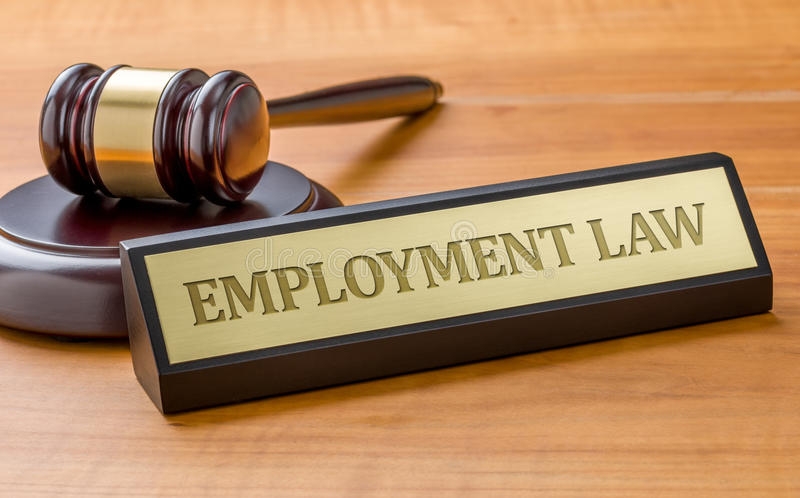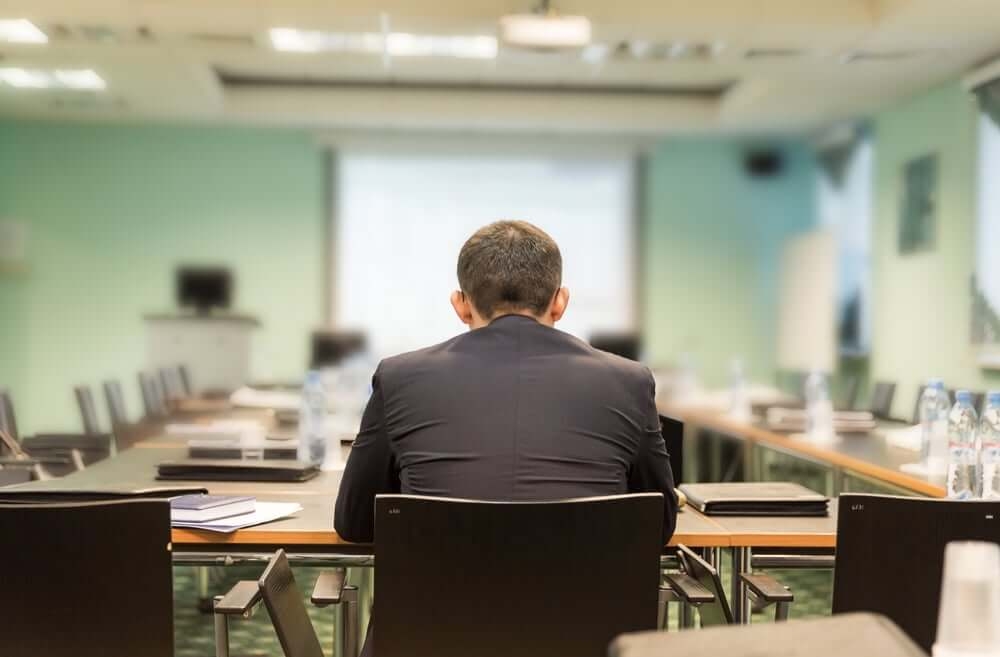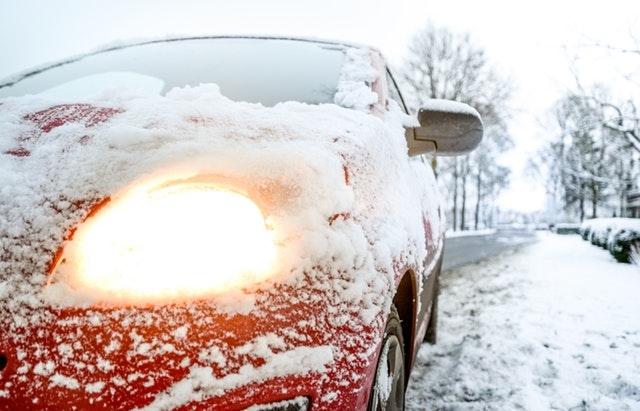i. Have fewer than 5 workers. ii. Are self-employed.
2. Consult your Employees As an employer, you have a legal duty to consult employees on health and safety matters. You can do this by listening and talking to them about the work they do and how you will manage the risks from COVID-19. You can do this by consulting with any recognised trade union health and safety representatives. If you do not have any, you can consult with a representative chosen by the employees. As an employer, you cannot decide who the representative will be. Enforcement Enforcing authorities identify employers who do not take action to comply with the relevant law and guidance to control public health risks. When they do, they can take a range of actions to improve control of workplace risks. The HSE and your local authority are examples of enforcing authorities. When they identify serious breaches, enforcing authorities can do a number of things:• send you a letter. • Serve you with an improvement or prohibition notice. • Bring a prosecution against you, in cases where they identify significant breaches.
When an enforcing authority issues you with any advice or notices, you should respond rapidly and within their timescales.1. Managing risk and completing your risk assessment
To carry out a suitable and sufficient risk assessment, you should consider the different ways the virus can spread and put in place measures to reduce the risk of each of these different ways. To reduce the risk of the virus spreading through aerosols, consider: Providing adequate ventilation: a) Through doors, windows and vents by mechanical ventilation using fans and ducts through a combination of both: b) Identifying any poorly ventilated spaces and taking steps to improve fresh air flow in these areas. A CO2 monitor could help you assess whether a space is poorly ventilated. If you cannot improve ventilation in poorly ventilated spaces, minimise use of these spaces. c) Encouraging use of outside space where practical. Identifying any areas of congestion in your venue and considering if any reasonable steps could be taken to avoid this. To reduce the risk of the virus spreading through droplets, consider: Putting in place measures to reduce contact between people, particularly between customers and workers. Where practical, measures could include: a) Reducing the number of people each person has contact with by using ‘fixed teams or partnering’ or ‘cohorting’ (so each person works with only a few others) b) Using screens or barriers to separate people from each other, or using back-to-back or side-to-side working, instead of face-to-face.i. Screens are only likely to be beneficial if placed between people who will come into close proximity with each other. ii. Encouraging the use of face coverings by workers or customers in enclosed and crowded spaces.
To reduce the risk of the virus spreading through contaminated surfaces, consider: a) Advising customers and workers to wash their hands or use hand sanitiser frequently. b) Maintaining regular cleaning of surfaces, particularly surfaces that people touch regularly. c) You should also make sure that workers and customers who feel unwell stay at home and do not attend the venue. d) By law, businesses must not allow a self-isolating worker to come to work. e) If your building has been unoccupied for a period during any lockdowns, you should read the HSE guidance on Legionella risks. f) You should share your risk assessment results with your workforce. g) If possible, consider publishing the results on your website. The government expect all employers with over 50 workers to do so.2. Supporting NHS Test and Trace (close contact services and betting shops only)
To support NHS Test and Trace. Close contact services and betting shops are encouraged to display an official NHS QR code poster. Although it is not legally required to do so, this will support NHS Test and Trace to contact those who may have been exposed to COVID-19 so that they can book a test. You should also have a system in place to record contact details for those who do not have the app.3. Managing your customers
To reduce the risk of spreading COVID-19 when visiting stores, outlets or close contact services. You should consider: In shops and branches a) Encourage customers to use hand sanitiser or handwashing facilities as they enter the premises. Do this to reduce the risk of COVID-19 spreading from people touching products while browsing. b) Re-think how assistance is provided. For example, using fixed pairs of colleagues to lift heavy objects rather than a single colleague lifting with a customer. c) Keeping contacts around transactions to a minimum. Where possible, use contactless payments. For customer restaurants and cafes, you should refer to the guidance on keeping workers and customers safe during COVID-19 in restaurants, pubs, bars, nightclubs and takeaway services. In close contact services a) Operating an appointment-only system. b) Asking COVID-19 related screening questions to clients ahead of their appointment, including:a. Are you required to be self-isolating? b. Have you had the recent onset of a new continuous cough? c. Do you have a high temperature? d. Have you noticed a loss of, or change in, your normal sense of taste or smell?
If the client has any of these symptoms, however mild, they should stay at home and reschedule their appointment. c) Ensuring any changes to entrances, exits and queue management take into account reasonable adjustments for those who need them. This includes disabled clients. For example, maintain pedestrian and parking access for disabled clients. d) Encouraging clients to arrive at the time of their scheduled appointment. e) Informing clients and contractors of guidance about visiting the premises before and on arrival. This includes information on websites, on booking forms and in entrance ways. f) Keeping contacts around transactions to a minimum. Where possible, use contactless payments. This includes tips.4. Providing and explaining available guidance
To make sure people understand what they need to do to maintain safety, consider: a) Providing clear guidance on how to reduce the risk of spreading COVID-19 to people when they arrive. For example, by phone, on the website or by email or with on-site signage and visual aids. b) Inform customers they should be prepared to remove face coverings if asked to do so by police officers and employees for identification. c) Provide written or spoken communication of the latest guidelines to both employees and customers inside and outside the store. d) You should display posters or information setting out how clients should behave on your premises to keep everyone safe. e) Consider the particular needs of those with protected characteristics. f) Ensure the information you provide to visitors does not compromise their safety.5. Customer toilets
To ensure that toilets are kept open and to ensure/promote good hygiene and cleanliness in toilet facilities. Public toilets, portable toilets and toilets inside premises should be kept open and carefully managed to reduce the risk of COVID-19 spreading. You should consider: a) Use of signs and posters to make people aware of how to wash their hands well. b) That they should wash their hands frequently. c) That they should not touch their faces. d) That they should cough or sneeze into a tissue which is binned safely, or into their arms if a tissue is not available. e) Making hand sanitiser available on entry to toilets where safe, practical and accessible. f) Ensure suitable handwashing facilities are available. This includes running water and liquid soap and suitable options for drying. Namely paper towels, continuous roller towels or hand dryers. Consider the needs of people with disabilities. g) Setting clear use and cleaning guidance for toilets, with increased frequency of cleaning in line with usage. You should use normal cleaning products and pay attention to frequently hand touched surfaces. Consider using disposable cloths or paper roll to clean all hard surfaces. h) Keeping the facilities well ventilated. For example by ensuring any mechanical ventilation works effectively and opening windows and vents where possible. i) Taking special care when cleaning portable toilets and larger toilet blocks. j) Putting up a visible cleaning schedule. Keep it up to date and visible. k) Providing more waste facilities and more frequent rubbish collection.6. Working in other people’s homes
To work safely in other people’s homes a) If you are going to someone else’s home to work, for example to provide professional services, you should communicate with households before any visits to discuss how the work will be carried out to reduce risk for all parties. b) You should not carry out work in households that are isolating because one or more family members has symptoms unless you are remedying a direct risk to the safety of the household or the public. c) When you are working in a household where somebody is clinically vulnerable, make prior arrangements to avoid any face-to-face contact. You should be particularly strict about handwashing, coughing and sneezing hygiene, such as covering your nose and mouth and disposing of single-use tissues. d) Ask households to leave all internal doors open, to minimise contact with door handles. e) Identifying busy areas across the household where people travel to, from or through. For example, stairs and corridors. Minimise movement within these areas. f) Taking breaks outside where possible. g) Limit the number of workers within a confined space. h) Arrange methods of safely disposing of waste with the householder. i) Allocate the same worker to the same household each time there is a visit where possible. For example, the same cleaner each time.7. Before reopening
To make sure any site or location that has been closed or partially operated is clean, and ready to restart. Before you restart work, you should: a) Assess all sites, or parts of sites, that have been closed. b) Review cleaning procedures and provide hand sanitiser. c) Check if you need to service or adjust ventilation systems.• Most air conditioning systems do not need adjustment if they draw in a supply of fresh air. See the HSE guidance on ventilation and air conditioning for more information. • Positive pressure systems can operate as normal. • Restart and test specialist equipment which may have been unused for longer than usual.
8. Keeping the workplace clean
To keep the workplace clean and prevent the spread of COVID-19 from touching contaminated surfaces. You should consider: a) Cleaning work areas and equipment between uses. Use your usual cleaning products. b) Determining the required cleaning process for expensive equipment that cannot be washed down. Design protection around machines and equipment. c) Frequently cleaning objects and surfaces that people touch regularly. This includes door handles and keyboards. d) Make sure there are adequate disposal arrangements for cleaning products. e) Clearing workspaces and remove waste and belongings from the work area at the end of a shift. f) If you are cleaning after a known or suspected case of COVID-19, refer to the guidance on cleaning in non-health care settings. g) Provide extra non recycling bins for workers and visitors to dispose of single use face coverings and personal protection equipment.9. Ventilation
To use ventilation to mitigate the risk of aerosol spread of COVID-19 in enclosed spaces. Good ventilation brings fresh or cleaned air into indoor spaces. The more fresh air that is brought inside, the more diluted any airborne virus will become. In poorly ventilated spaces, residual virus can remain in the air after an infected person has left and increase the risk of COVID-19 spreading. You should maximise the supply of fresh air in your premises. You can do this through: a) Fully or partially opening windows, air vents and doors to improve natural ventilation. If you use mechanical ventilation, ensuring that your systems are set to maximise fresh air and minimise air recirculation. Maximising the amount of fresh air your system draws in or ensuring additional fresh air will help avoid COVID-19 spreading. b) Identifying any poorly ventilated spaces as part of your risk assessment and taking steps to improve fresh air flow in these areas (see below for further details). c) You can also encourage the use of outside space where practical, in particular for higher risk activity such as exercise or when people are singing or raising their voices. If you cannot improve ventilation in poorly ventilated spaces, you should consider whether it is safer to restrict the time spent in these spaces and the number of people that access these spaces or stop using them. Although CO2 levels are not a direct measure of possible exposure to COVID-19, checking levels using a monitor can help you identify poorly ventilated areas How the measurements can help you take action CO2 measurements should be used as a broad guide to ventilation within a space rather than treating them as safe thresholds. Outdoor levels are around 400 parts per million (ppm) and indoors a consistent CO2 value less than 800ppm is likely to indicate that a space is well ventilated. A CO2 concentration of above 1500ppm in a space is an indicator of poor ventilation. You should take action to improve ventilation where CO2 readings are consistently higher than 1500ppm. Where there is continuous talking or singing, or high levels of physical activity (such as dancing, playing sport or exercising), providing ventilation sufficient to keep CO2 levels below 800ppm is recommended.10. Workplaces and workstations
Reducing the risk of spreading COVID-19 by reducing the number of people workers come into contact with. Social distancing guidance no longer applies and there are no limits on social contact between people from different households. You can mitigate this risk by reducing the number of people your workers come into contact with. a) Reduce the number of people each person has contact with by using ‘fixed teams or partnering’ or ‘cohorting’ (so each person works with only a few others). b) Reviewing layouts, using screens or barriers to separate people from each other, or using back-to-back or side-to-side working, instead of face-to-face (screens are only likely to be beneficial if placed between people who will come into close proximity with each other). You should take account of those with protected characteristics and discuss with disabled workers what reasonable adjustments can be made to the workplace so they can work safely. Workstations should be assigned to an individual if possible. Often this will not be possible, and if they need to be shared, there should be ways to clean them between each user.11. Hygiene: handwashing, sanitation facilities and toilets
To help everyone keep good hygiene through the working day, you should consider: a) Using signs and posters to make people aware of how to wash their hands well, that they should wash their hands frequently and that they should not touch their faces. b) they should cough or sneeze into a tissue which is binned safely, or into their arms if a tissue is not available. c) Provide regular reminders and signage to maintain hygiene standards. d) Provide hand sanitiser in multiple accessible locations, as well as washrooms. e) Consider the needs of people with disabilities. f) Setting clear use and cleaning guidance for toilets. This is to ensure they are kept clean. g) Enhancing cleaning for busy areas. h) Taking special care when cleaning portable toilets. i) Providing more waste facilities, and more frequent rubbish collection. j) Providing hand drying facilities. Provide paper towels, continuous roller towels, or electrical dryers. k) Keeping the facilities well ventilated. For example, by ensuring any mechanical ventilation work effectively and opening windows and vents where possible.12. Hygiene: handwashing, sanitation facilities and toilets
To help everyone keep good hygiene through the working day, you should consider: l) Using signs and posters to make people aware of how to wash their hands well, that they should wash their hands frequently and that they should not touch their faces. m) they should cough or sneeze into a tissue which is binned safely, or into their arms if a tissue is not available. n) Provide regular reminders and signage to maintain hygiene standards. Close contact services practitioners should increase handwashing during and in between appointments. Use of hand sanitiser if handwashing facilities are not available. o) Provide hand sanitiser in multiple accessible locations, as well as washrooms. p) Consider the needs of people with disabilities. q) Setting clear use and cleaning guidance for toilets. This is to ensure they are kept clean. r) Enhancing cleaning for busy areas. s) Taking special care when cleaning portable toilets. t) Providing more waste facilities, and more frequent rubbish collection. u) Providing hand drying facilities. Provide paper towels, continuous roller towels, or electrical dryers. v) For close contact services, practitioners, changing practices to avoid skin to skin contact, unless it is necessary for the treatment. Use of gloves for any treatment where there is a risk of contact with blood or body fluids.13. Customer changing rooms
To reduce the risk of COVID-19 spreading in customer changing rooms. The enclosed nature of changing rooms may result in increased risk of COVID-19 spreading. You should manage them carefully to reduce that risk. Businesses should update their risk assessments for each premises where changing rooms are being used. a) You should ensure adequate ventilation in changing rooms. For example, by ensuring mechanical ventilation works effectively and opening windows and vents where possible. b) Where possible, leaving doors or curtains open in vacant changing rooms. This will increase fresh air flow into cubicles that have recently been occupied before the next customer enters. c) Making hand sanitiser available on entry and exit. d) Leaving a gap of several minutes between one customer leaving a cubicle and the next customer entering. For stores with 2 or more cubicles, you could do this by alternating cubicle usage. e) Setting clear use and cleaning guidance, where changing rooms are cleaned frequently or between every use. Use normal cleaning products. Pay attention to frequently hand touched surfaces and consider using disposable cloths or paper roll to clean all hard surfaces. f) Creating procedures to manage clothes that have been tried on, to minimise contact between customers and employees.14. Handling goods, merchandise and other materials, and onsite vehicles
To reduce the spread of COVID-19 through contact with objects coming into the premises. a) Encourage people to wash their hands more often. Put in place more handwashing facilities for workers who handle goods and merchandise. Provide hand sanitiser where this is not practical. b) Regularly clean vehicles employers may take home. c) Putting in place a process to manage customer use of testers. For example, have staff monitor the use of testers, limit customer handling, and clean them between uses. For cosmetic and make-up testing, you could also use disposable applicators and place them into disposable pots, use sanitised tiles, and decant products. d) Putting in place pick-up and drop-off collection points to reduce the number of people workers come into contact with. e) Setting up ‘no contact’ return procedures, where customers take return goods to a designated area. f) Encouraging contactless refunds, where possible. g) Providing guidance to how workers can safely assist customers with handling large item purchases. h) Cleaning touch points after each customer’s use or handover. Consider interior and exterior touch points in certain cases. For example, rental equipment and test drive and rental vehicles. i) Making sure any equipment you take on home visits is thoroughly:a. Cleaned b. Disinfected c. Sterilised
Doing this before you use it, and between clients. Use your usual cleaning products.15. Personal protective equipment (PPE)
Where you are already using PPE in your work activity to protect against non-COVID-19 risks, you should keep doing so. Any use of PPE should be determined by an assessment of risks in the workplace. a) Do not encourage the precautionary use of PPE to protect against COVID-19 unless you are in a clinical setting or responding to a suspected or confirmed case of COVID-19. b) Unless you are in a situation where the risk of COVID-19 transmission is very high, your risk assessment should reflect the fact that PPE has an extremely limited role in providing extra protection. c) If your risk assessment does show that PPE is required, you must provide this PPE free of charge to workers who need it. d) Any PPE provided must fit properly.16. Face coverings
A face covering is something which safely covers your mouth and nose. Face coverings are no longer required by law. However, the government expects and recommends that people continue to wear face coverings in crowded, enclosed spaces. Where worn correctly, this may reduce the risk of transmission to themselves and others. Be aware that workers may choose to wear a face covering in the workplace. You should consider: a) Encouraging the use of face coverings by workers (for example through signage), particularly in indoor areas where they may come into contact with people they do not normally meet. This is especially important in enclosed and crowded spaces. b) When deciding whether you will ask workers or customers to wear a face covering, you would need to consider the reasonable adjustments needed for employees and clients with disabilities. c) You would also need to consider carefully how this fits with other obligations to employees and customers arising from the law on employment rights, health and safety and equality legislation. Some people are not able to wear face coverings, and the reasons for this may not be visible to others. Please be mindful and respectful of such circumstances. Be aware that face coverings may make it harder to communicate with people who rely on lip reading, facial expressions and clear sound. a) If your workers choose to wear a face covering, you should support them in using face coverings safely. This means telling them:i. To wash their hands thoroughly with soap and water for 20 seconds or use hand sanitiser before putting on face coverings. They should also do this before and after removing them avoid touching their faces or face coverings. Otherwise they could contaminate them with germs from their hands. ii. Change their face coverings if they become damp or they have touched them. iii. Continue to wash their hands regularly. iv. Change or wash their face coverings daily, if the material is washable, to wash it in line with manufacturer’s instructions. If it is not washable, to dispose of it carefully in their usual waste
17. Outbreaks in the workplace
To provide guidance if there is a COVID-19 outbreak in your workplace. You will usually need to: a) Make sure your risk assessment includes an up-to-date plan in case there is a COVID-19 outbreak. This plan should nominate a single point of contact (SPOC) where possible. The SPOC should lead on contacting local Public Health teams. b) If you become aware of any positive cases of COVID-19 in your workplace, you should inform your Local Authority Public Health Team. c) You should immediately identify any close workplace contacts and ask them to self-isolate. You should not wait for NHS Test and Trace. This prompt action will help reduce the risk of a workplace outbreak.• If your local PHE health protection team declares an outbreak, you will be asked to: • Record details of symptomatic Employees. • Assist with identifying contacts. • Ensure all employment records are up to date.
You will be provided with information about the outbreak management process. This will help you to:• Implement control measures. • Assist with communications to employees. • Reinforce prevention messages.






